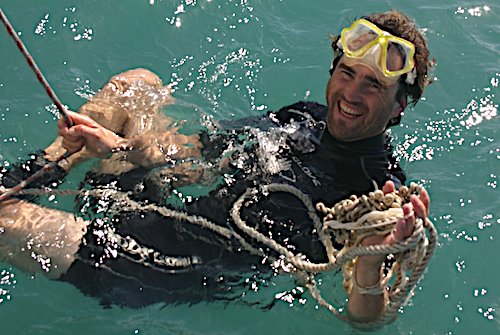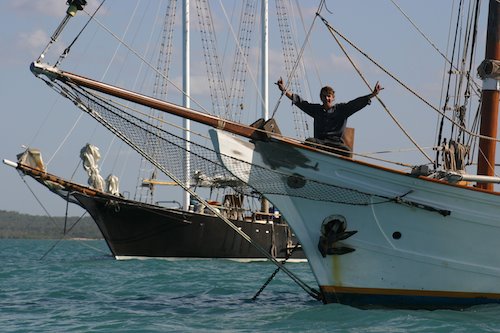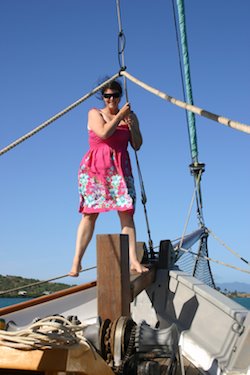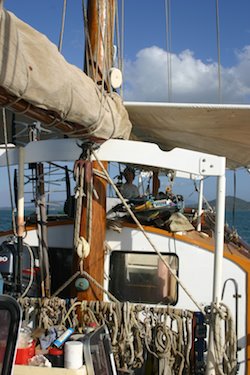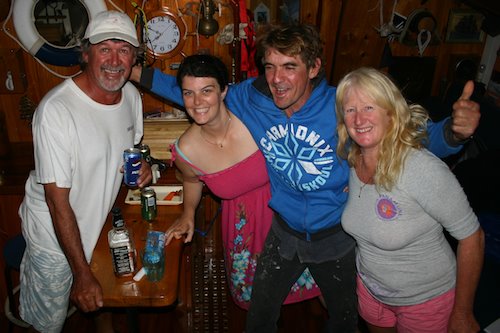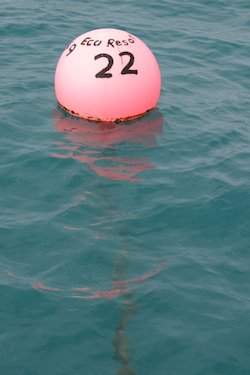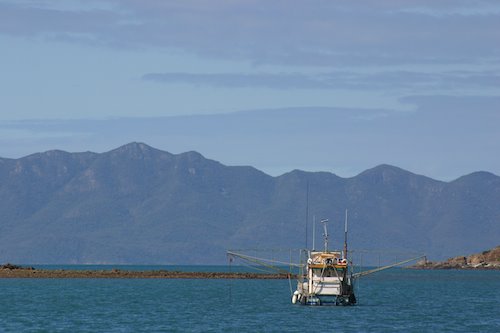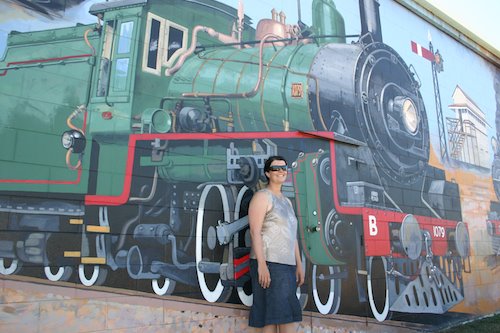We had a terrible night on the Bowen mooring although just for a change it was not the fault of the mooring itself, which behaved impeccably. Following last night’s grounding, we kept waking up at the slightest sound or movement and running up on deck to check the surrounding anchor and navigation lights. Even in our dreams we were still listening out for the ‘thump’ of a grounding keel.
At dawn we gave it up as a bad job and began clearing away the debris of the rescue attempt. The decks at this point were cluttered with ropes, chains and bridles, and liberally spattered with bottom mud. The interior looked as if a bomb had hit it after the boat was purposely knocked down to free the keel.
The wind continued to blow, and we realised that we weren’t going to get peace of mind until we went somewhere else where the memories weren’t as fresh. Fortunately Queens Bay was only around the corner, which had the advantage of being spacious and uncrowded but the disadvantage of being renowned for its beam swell.
At anchor again and with most of the afternoon still ahead of us, we worked out a few modifications to our nightly routine. Although our ship-board GPS comes with an anchor alarm which warns you if you stray too far from a pre-set position, we have only rarely used it because the only way of powering up the GPS is to turn on all the navigation systems at once, which unnecessarily uses up a lot of valuable power. I rewired our GPS onto its own circuit so that we can fire it up on its own for use as an anchor alarm. It is on now.
Secondly, we had time and space to try an idea that we have been discussing for some time. The problem with swell is that it doesn’t always come from windward, so that the boat (which always tries to face into wind) takes the waves on the quarter or on the beam, which produces an uncomfortable rolling action. We reasoned that we could hold our bow into wind by putting out a kedging anchor at the stern and hauling it in until we were angled into the swell.
We’ve never seen this idea discussed anywhere in the literature. However, given our success with the kedging anchor during our grounding, we applied our newly honed skills and tried it out. Our new tactics worked perfectly, and while we can see that all the other boats in the bay are being thrashed abominably, we are pointing directly into the swell and are only experiencing a pleasant rocking motion. Hopefully we’ll be able to get a good night’s sleep, our first in three days.
